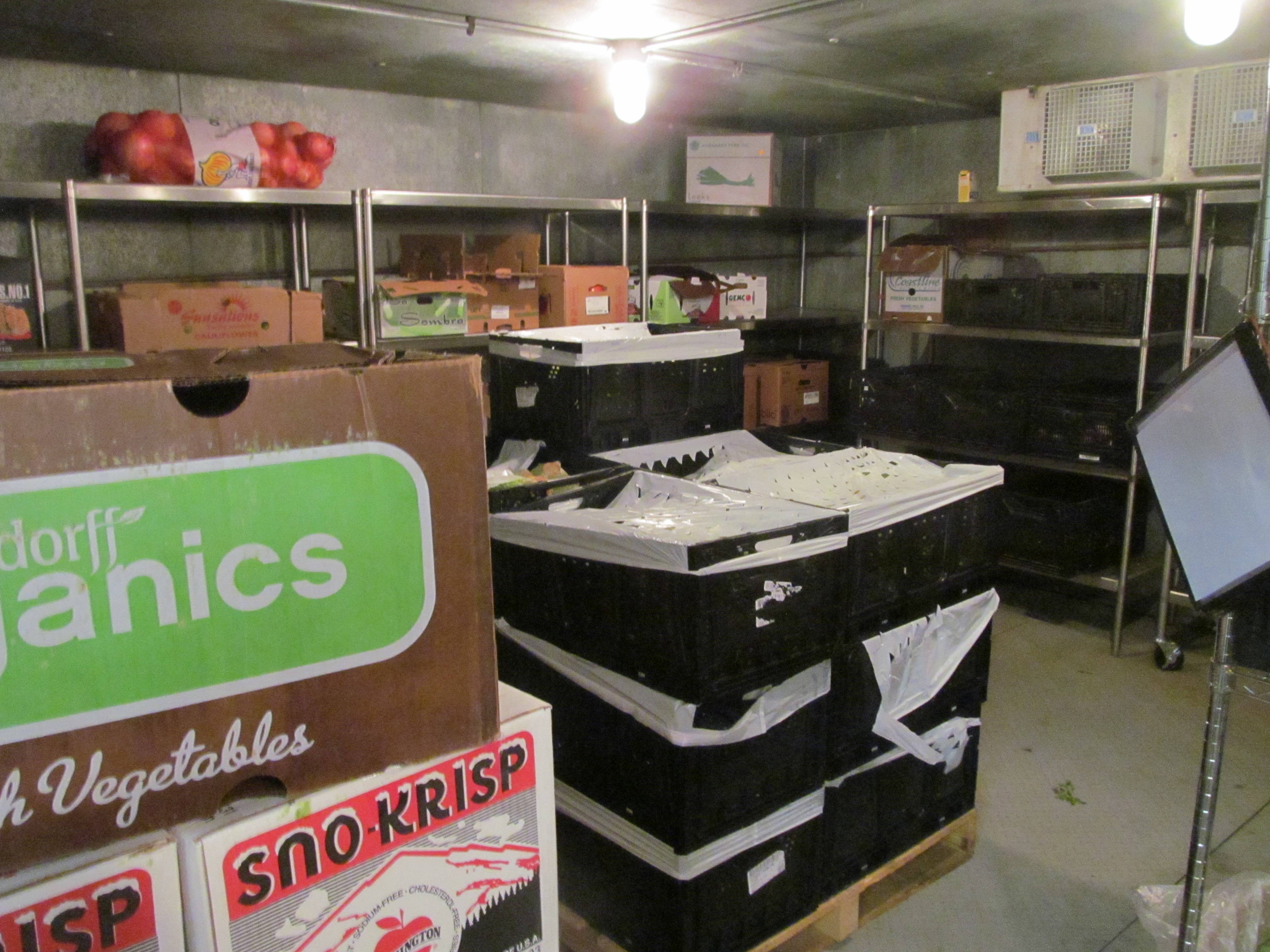It's hard enough to feed a family with different tastes, but imagine trying to feed a "family" of 4,300 from more than 600 species. That's what they do every day at the Denver Zoo Nutrition Center.
Let's go inside the Denver Zoo's "grocery store and kitchen" and learn the secrets behind the scenes.
And it's literally behind the scenes.
The Denver Zoo Nutrition Centeris located behind the sheep mountain exhibit.
Secret No. 1: There's a lot of food in the refrigerators and freezers that you would have at home -- lettuce, carrots, squash, eggs, shrimp, pears, bananas, avocados, apples and grapes.
Of course, there are a lot of items you wouldn't have in your kitchen -- crickets, worms, quail, mice and rats.

The worms and crickets arrive twice a week and sometimes the Denver Zoo has to provide "life support," like keeping the bugs in a warm room to keep them alive before they are fed to the animals.
Secret No. 2: While most of the food is delivered in bulk, the staff does order some items from Amazon. In the past they've purchased items like quinoa, a low-sugar drink mix, peanut butter and low-sugar jelly from the grocery store.
The quinoa was for an orangutan who was having issues eating, in hopes he might like that. The peanut butter and jelly are used to hide medication. And the drink mix is used in training.
Denver Zoo nutritionist Jennifer Parsons stressed that they buy low-sugar items to help prevent diabetes.
Secret No. 3: The Denver Zoo is buying more food that stimulates their animals' brains like meat on a bone.
After years of feeding animals a dry kibble in a pile, the Denver Zoo says it has been working for several years to expand their animals' diets to include more whole foods including healthy vegetables and partial carcasses.
They might give a group of pack animals part of a dead cow so the group can work together, like they would in the wild, to get the meat off the bone and find the bits they want to eat.
"We're looking for better ways of presenting food," Parsons said.
Secret No. 4: For the most part, when the zoo animals are given prey for food, it's dead and not alive. That's because zoo officials don't want the prey to fight back and injure the zoo animal. The only exception is for animals that eat crickets, worms and fish. Those are fed live.

However, we're told one bird, 11-year-old Uche, does gets frozen crickets. It's because he's getting old and his reflexes just aren't what they used to be, zookeepers said.

Secret. No. 5: There's also a "wild" version of food for herbivores called browse -- branches and leaves from trees and shrubs. Browse is given to giraffes, gorillas, birds and other animals so they can eat the leaves, strip the bark and chew on the stems.

There's not enough plants grown at the zoo for all the animals, and of course, not much grows in winter, so the Denver Zoo buys "browse" -- leafy green plants.
"We give them what they would eat, in ways they would eat, in the wild," explained Parsons.
Secret No. 6: Like many humans, some animals also get supplements. Freezing and thawing prey takes away vitamins like B and E, so some animals need supplements to get enough nutrition.
Parsons tracks the protein, fat and nutrients in each animal's diet.
Not only is she trying to add healthy items, she's also looking for low-calorie options.
"We can feed them more often, allowing the animal to eat longer," Parsons said. "If we don't keep them occupied with food, they may exhibit other behaviors we don't want, like licking a pole."
Secret No. 7: Hay! They go through a lot of hay here. The zoo gets 600 to 680 bales of hay every five to six weeks. They get both grass hay and alfalfa hay. Different types of hay go to different animal species.
Secret No. 8: Some of that romaine lettuce in the fridge may be going to you! The Denver Zoo allows guests to feed the giraffes.
Secret No. 9: Who eats the most?
You probably guessed it.
The elephants! They eat about 1.5 to 2 percent of their body weight each day in vegetables and hay.

The Denver Zoo is open year round. While most visitors wander around the zoo, there are guided tours and animal encounters available. Learn more about the Denver Zoo here.
Check out more of our secrets of Colorado stories:
- 17 secrets of the Eisenhower Tunnel and Johnson Tunnel
- 13 secrets of NORAD Combat Operations Center and Cheyenne Mountain Air Force Station
- 11 secrets of Sports Authority Field at Mile High
- 17 secrets of Coors Field
- 9 secrets of the Brown Palace Hotel
- 9 secrets of Denver's Union Station & the Crawford Hotel
- 15 secrets of the new Denver International Airport Westin Hotel project
- 15 secrets of the Colorado Capitol
- 10 secrets of the 16th Street Mall Clocktower
- 12 secrets of the Furniture Row NASCAR garage in Denver
- 7 secrets of the Wild Animal Sanctuary
- 7 secrets of Cirque du Soleil's Kurios: Cabinet of Curiosities Denver performances
- 7 secrets of Rockmount Ranch Wear
- 11 secrets of the History Colorado Center
- 10 secrets of the Federal Reserve Bank in Denver
- 7 secrets of the National Weather Service
- 12 secrets of Mountain States Telephone & Telegraph Building
Got a place you want us to go inside and learn the secrets of? Email Debbie@TheDenverChannel.com.







